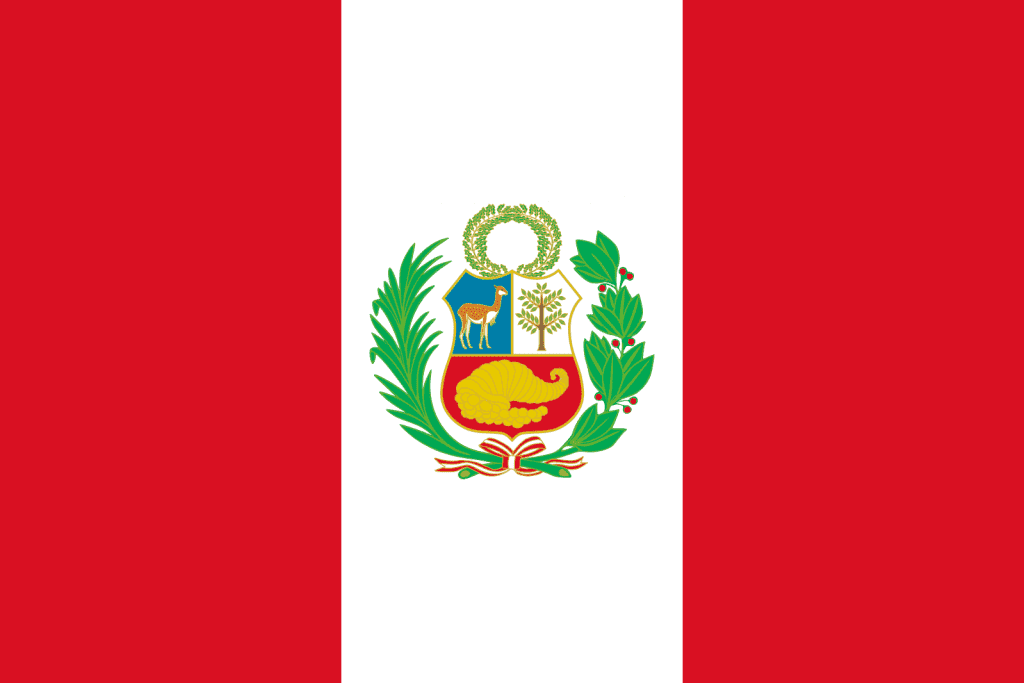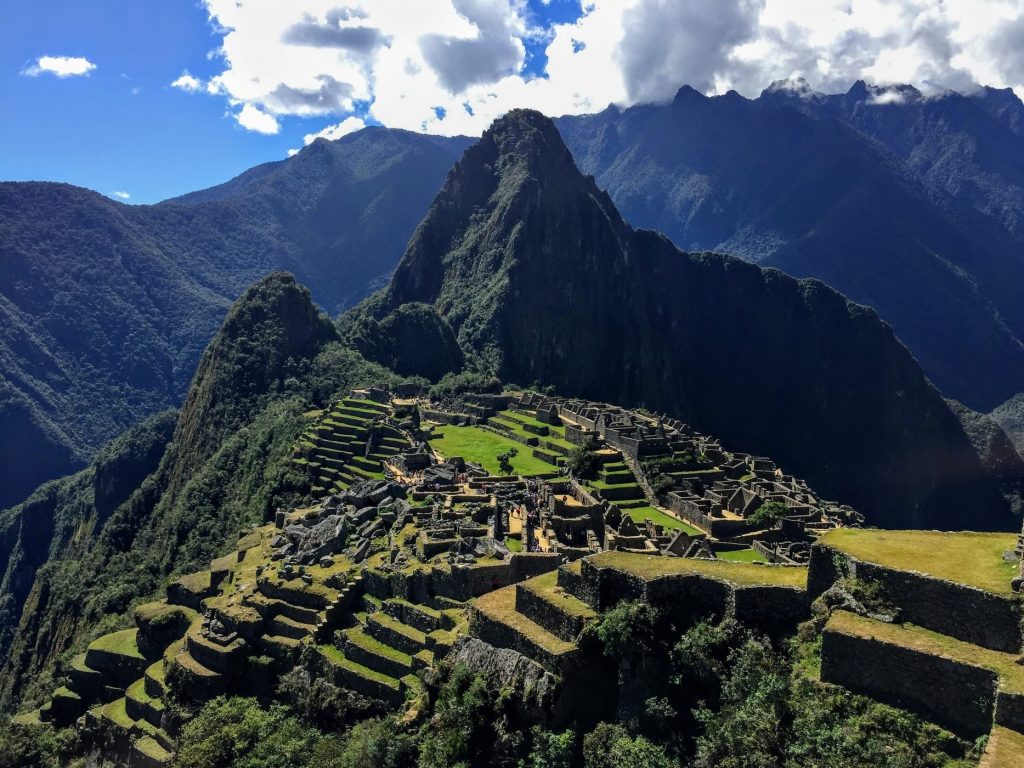1. Peru has plenty of geographical company.
It is bordered by Ecuador and Colombia to the north, Brazil to the east, Bolivia to the south-east and Chile to the south. It also has a coastline along the Pacific Ocean to the west. The coordinates for Peru are 12.0433° S, 77.0283°
2. Peru’s landscape is mystifying.
The terrain here is a wonderful mix of coastal plain to the west, rugged and tall Andes mountains in the centre and lowland Amazon jungle to the east. Oh how we’d love to explore the lost ruins!
3. Peru is probably bigger – and more populous – than you might think.
The total land area of Peru is 496,224 square miles (1,285,216 square kilometres). Peru’s population had reached 33.72 million in 2021.

4. What’s the capital of Peru?
Lima is the capital of Peru; it covers a vast area of 1,032 square miles (2,672 square kilometres) and has a population of 9,751,717 (2014).
5. Peru is known for its dizzying heights.
Peru’s Huascarán National Park is home to 27 snow-capped peaks6,000 metres (19,685 feet) above sea level. Of all of these, El Huascarán is the highest, standing at 6,768 metres (22,204 feet).
6. Even the deserts here are hilly!
At 1,176 metres (3,860 feet) from the base to the summit, Cerro Blanco which is located in the Sechura Desert near the Nazca Lines, is the highest sand dune in the world!
7. Ancient Peruvian capitals were still getting unearthed well into the 20th century.
In 1911, Hiram Bingham discovered the Inca citadel of Machu Picchu after being lost to the Amazon Jungle for hundreds of years!
8. Peru is rife with flora.
Gardeners will appreciate Peru for its 1,625 types of orchids; 425 of them can be found growing naturally, close to Machu Picchu!
9. Peru has interesting new year traditions.
If you happen to be visiting during the New Year period, make sure you stock up on yellow underpants, because in Peru, it is tradition to give them to friends and family on New Year’s Eve!
10. Peruvians celebrate their independence in July.
July 28th is known as ‘Fiestas Patrias’, Peru’s Independence Day.
11. The waves around Peru are spectacular for surfing!
If you have a passion for surfing, pack your board shorts and head off to Peru because at a whopping 4 kilometres long, Chicama boasts the world’s longest left-handed wave and Mancora has the world’s largest left-handed point-break.
12. Spuds originate from Peru.
Did you know that the potato is originally from Peru? Neither did we! Peruvians who are proud of their heritage can be heard to say “Soy mas Peruano que la papa” which means “I am more Peruvian than the potato’. Fair enough…
13. Peru is big on coffee, but not the biggest!
Peru is the 8th largest producer of coffee in the world and is the 5th largest producer of the Arabica We love coffee – our mornings wouldn’t be the same without it!
14. There are some curious cuisines down here…
Vegetarians and owners of guinea pigs divert your eyes, for the Cuyor Guinea Pig is a traditional dish eaten in Peru. Sad face.
15. ….VERY curious, actually!
Lock up your cats! In Chincha it’s quite normal to eat cat! Good grief!
16. The Peruvian national drink, thankfully, is a little tamer.
For a refreshing, authentic drink, make sure you try the Pisco Sour, a national Peruvian drink made with Pisco brandy, lemons, sugar water, egg whites, ice and finished with bitters.
17. Peru has a long life expectancy average.
The average life span here is 76.52 years. (2018)
18. Peru’s climate does actually vary quite a lot.
The climate varies from tropical in the east, temperate in the Andes and dry desert in the west. Lovely!
19. In fact, Peru is amazingly bio-diverse.
There are approximately 90 different micro-climates in Peru, making it one of the most bio-diverse countries on the planet!
20. Peru is multi-lingual.
Peru has three official languages – Spanish, Quechua and Aymara. However, it’s thought that east of the Andes in the Amazon Jungle regions, the natives speak a further 13 different languages!
21. What’s the official currency of Peru?
If you’re planning a visit to this incredible country, make sure you stock up on Peruvian nuevo sol, Peru’s official currency.
22. Peru grows plenty of different crops.
Peru grows corn (over 55 varieties in a range of colours including purple, white and black!), coffee, cotton, sugarcane and rice, rears chickens and catches fish.
23. However, Peru has many other exports.
Its industry consists of mining for metals, petroleum, fishing, clothing, textiles and food processing.
Peru also exports gold, copper, zinc, fish and fish products, crude petroleum and byproducts.
24. It’s actually easy to call people in Peru.
Want to call your friends or family in Peru? You’ll need to dial the international code for Peru, which is +51.
FAQs about Peru
What is Peru most famous for?
Probably one of the most famous ancient sites in the world, Machu Pichu is a 15th Century Inca citadel 2,430 metres above sea level in the Andes Mountains.
What is the nation dish of Peru?
Peru’s national dish is Ceviche, a zesty marinated delicious raw fish fish.
What is the capital of Peru?
Lima: Its’s located on Peru’s Pacific coast, and is the largest city in the country.
Do you know any fun facts about Peru? Share them in the comments below!
